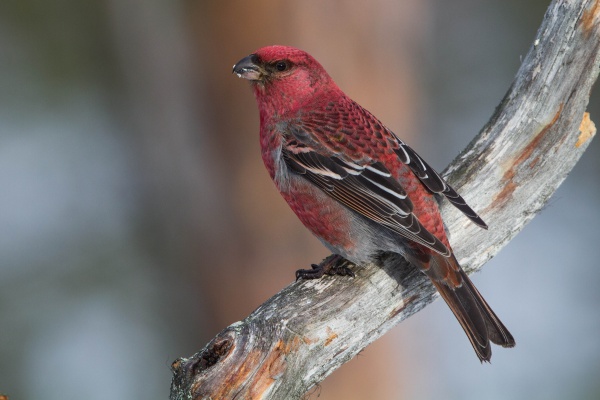Facts About Pine grosbeak
The Pine Grosbeak, belonging to the true finch family Fringillidae, is the sole species in the genus *Pinicola*. These birds inhabit coniferous forests across regions such as Alaska, the western mountains of the U.S., Canada, subarctic Fennoscandia, and extending into Siberia within the Palearctic region. Their diet mainly consists of small fruits, particularly rowans, which they favor during the winter months. Notably, Pine Grosbeaks exhibit irruptive behavior, traveling considerable distances to find food if the fruit supply fluctuates annually.
First described by Carl Linnaeus in 1758, the Pine Grosbeak, despite being the only species in its genus, is closely related to bullfinches and was once thought to include the crimson-browed finch. Presently, there are eight recognized subspecies of Pine Grosbeaks.
In terms of physical characteristics, Pine Grosbeaks rank among the largest in the true finch family, measuring 20-25.5 cm in length and weighing between 52-78 g. Adult males are easily identifiable by their striking rose-red heads, backs, and rumps, while females display an olive-yellow coloration with grey backs. Their calls and songs vary by region and generally consist of whistled calls and short musical warbles.
Pine Grosbeaks breed in the boreal forests of northern Eurasia and North America. They tend to stay near their breeding areas or migrate short distances southward. In years when food is scarce, they may travel farther south than usual. They prefer nesting in coniferous forests, often selecting branches or tree forks for their nests. Their diet includes seeds, buds, berries, and insects, with foraging typically done in flocks outside the nesting season.
Although they are uncommon visitors to temperate parts of Europe, Pine Grosbeaks are largely permanent residents throughout most of their range, only migrating south under extreme conditions. Both males and females develop gular pouches to store seeds, which they use to feed their young.

 Russia
Russia